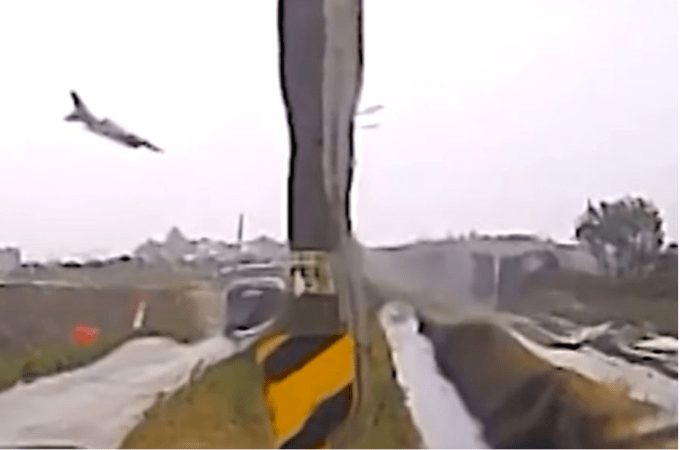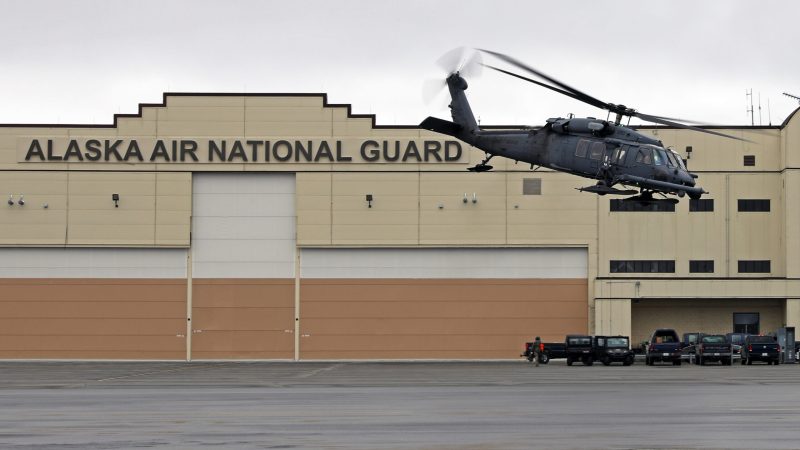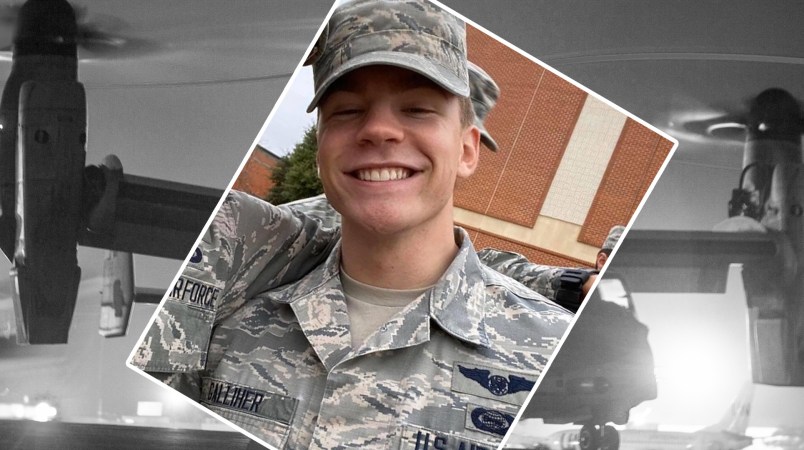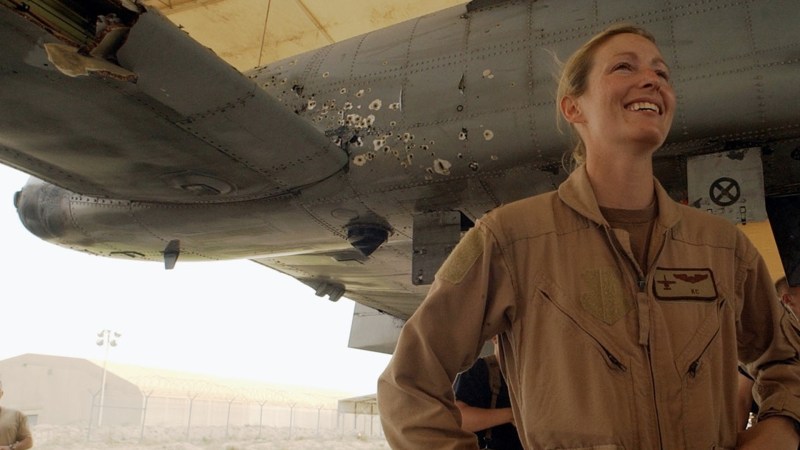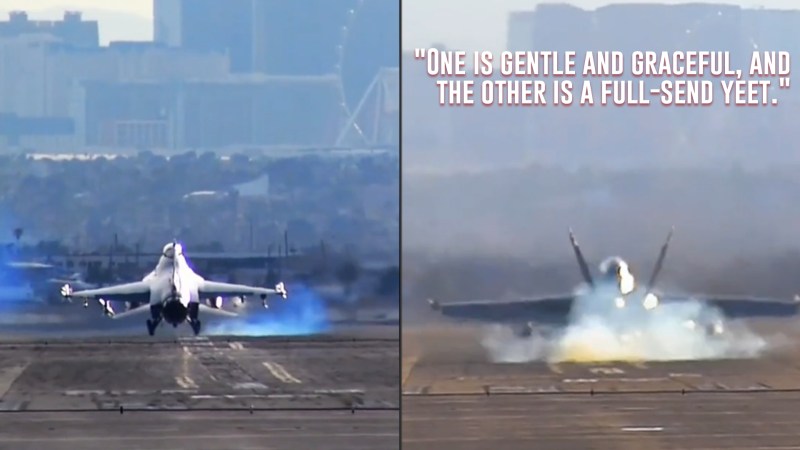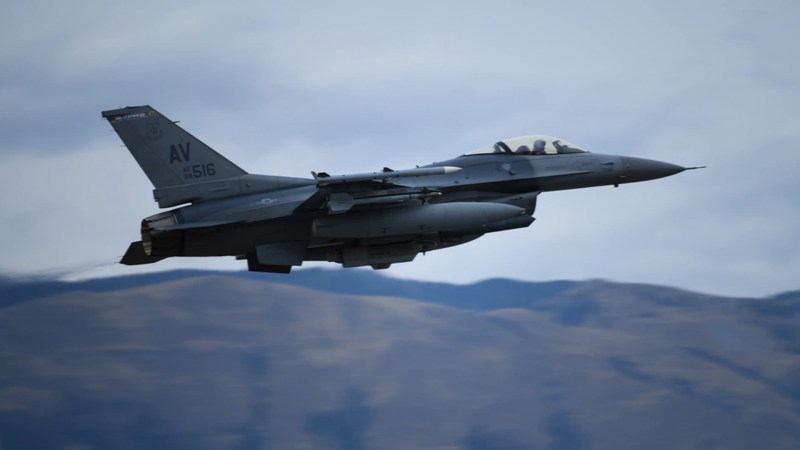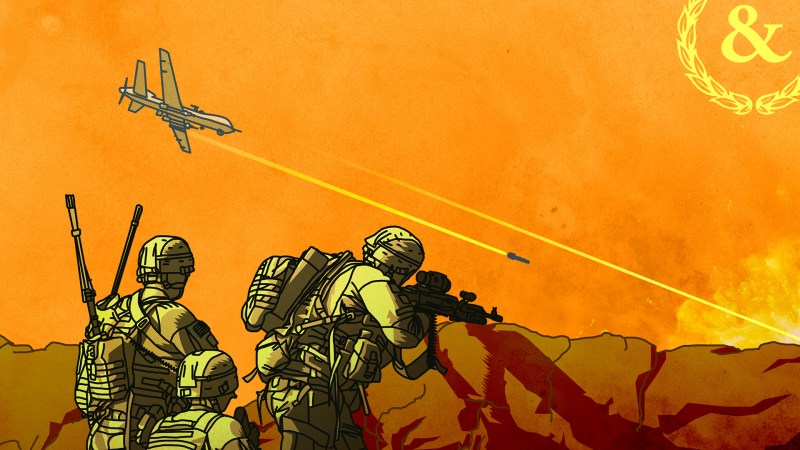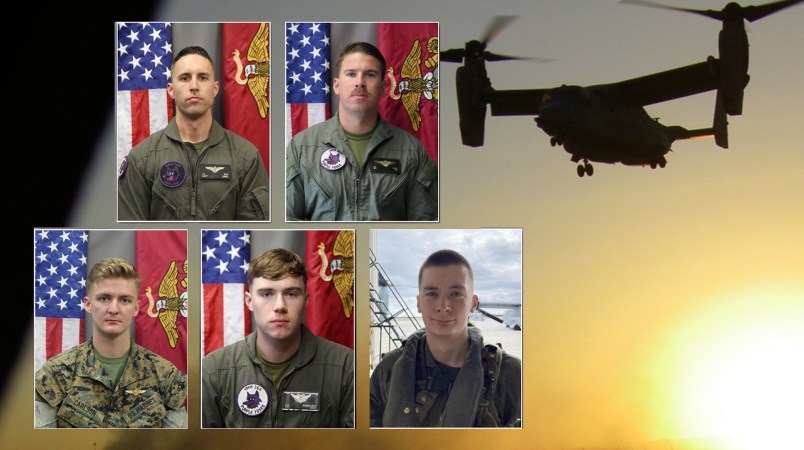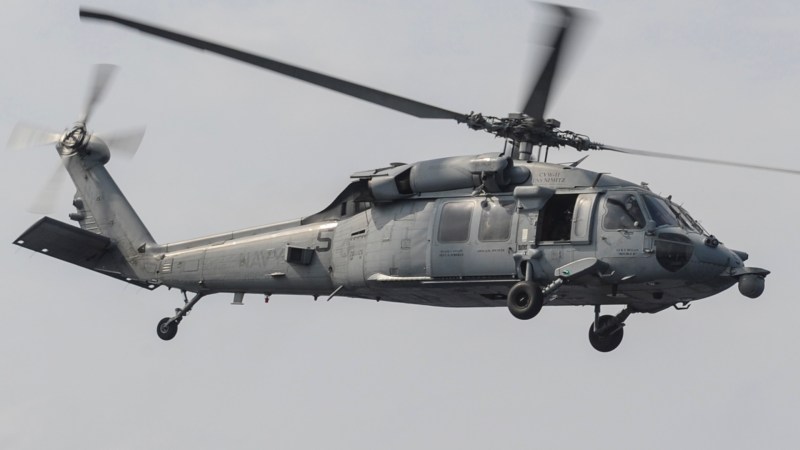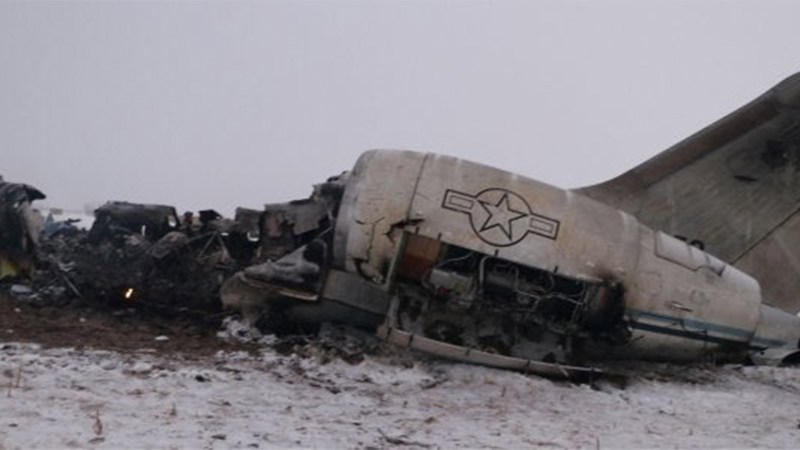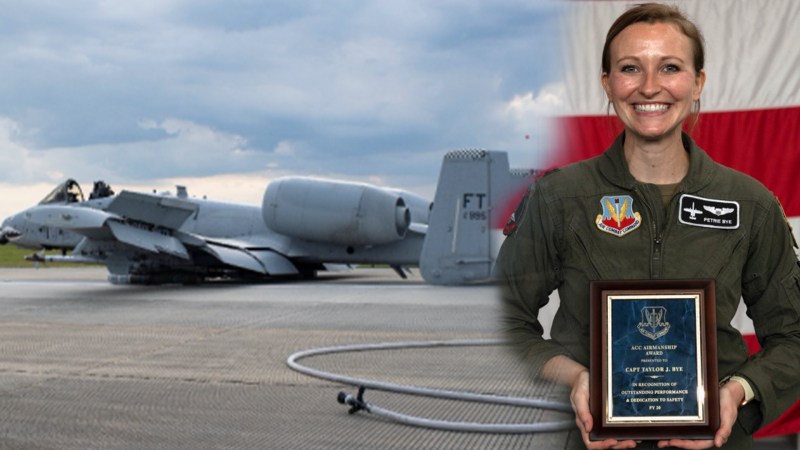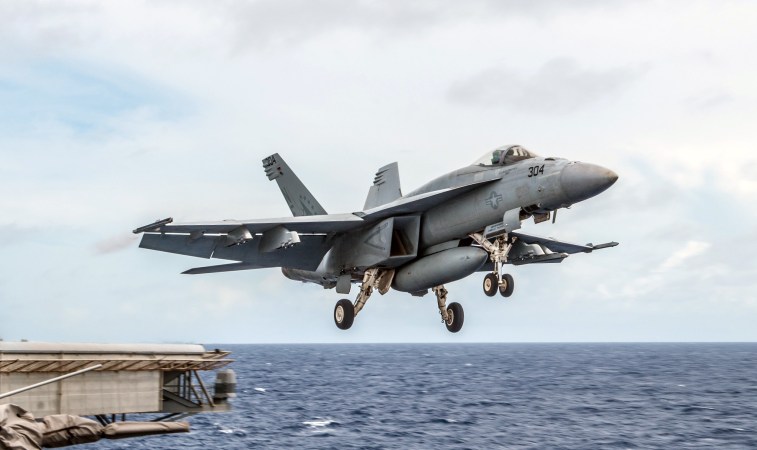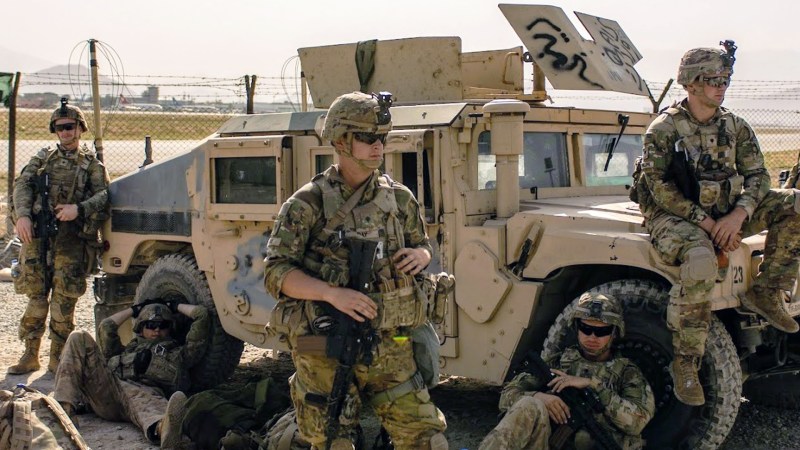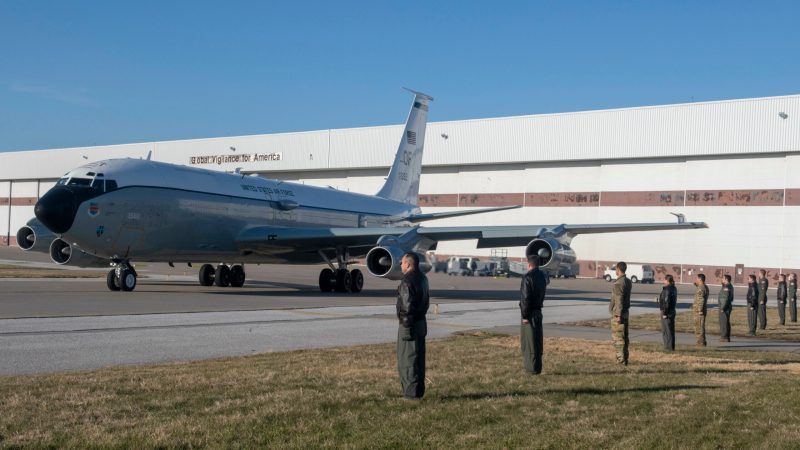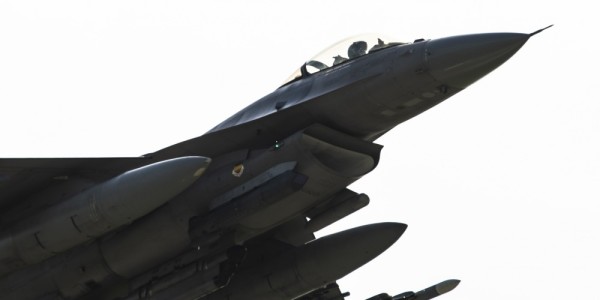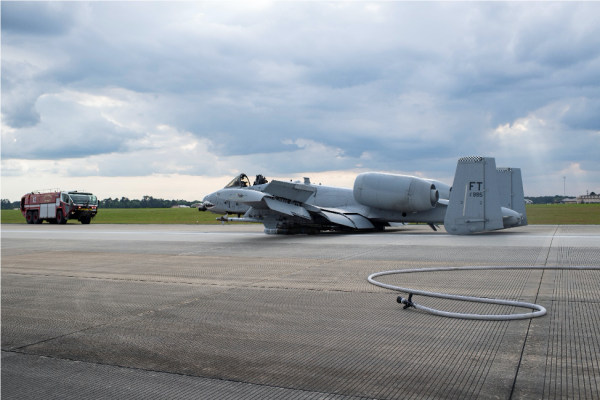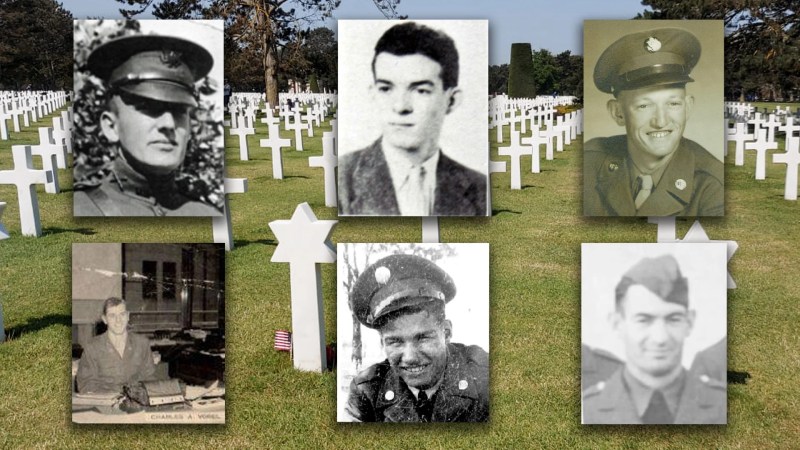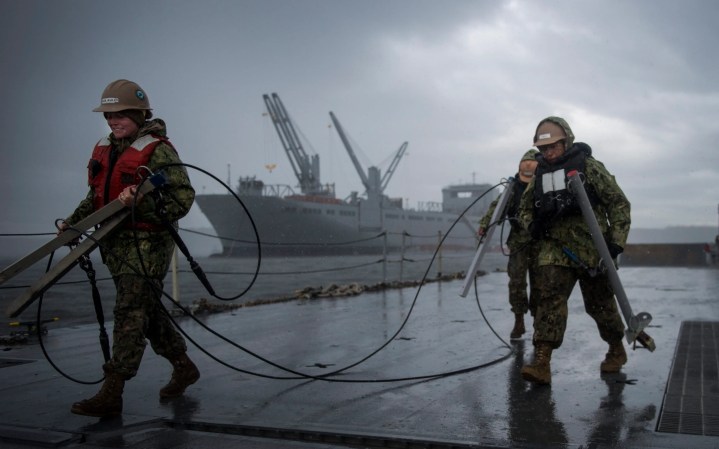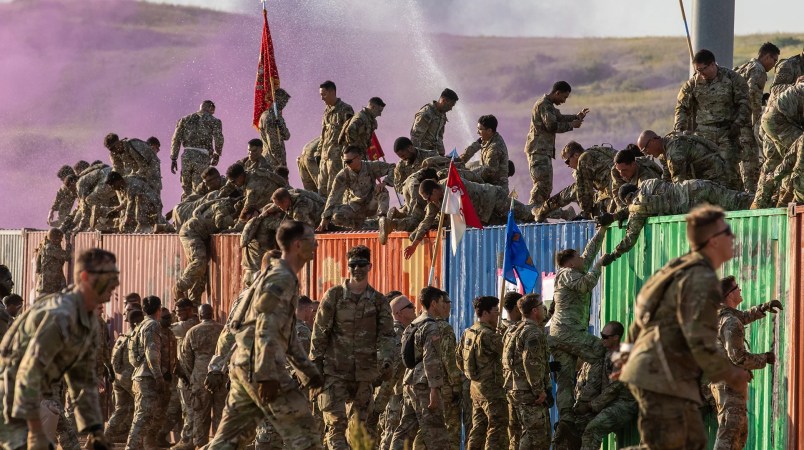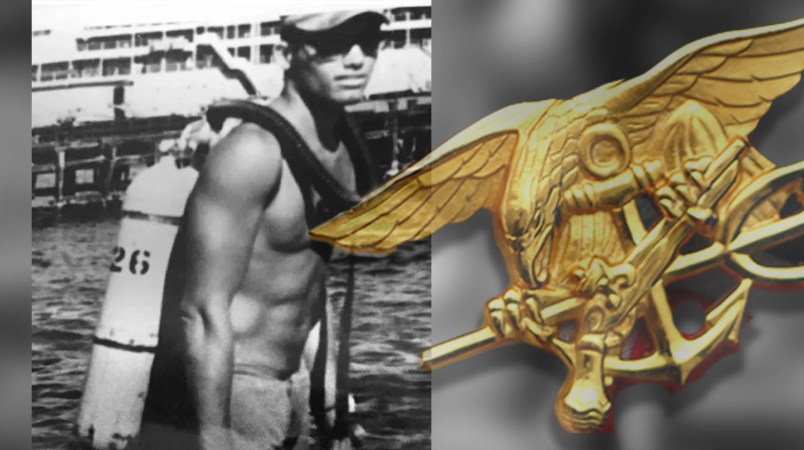An experienced F-15 pilot made two split-second errors during an emergency landing — including saying a vital emergency word just once over the radio rather than repeating it three times — that sent the plane crashing into an Oregon drainage ditch in May 2023, an Air Force investigation found. The crash occurred even though in the minutes before the fighter slid off the end of the runway at Kingsley Field near Klamath Falls, Oregon, the pilot had done an admirable job of getting the plane safely down onto the base’s runway after a massive mid-flight hydraulics failure, an Accident Investigation Board report released this week found.
“While airborne, the [pilot] complied with all hydraulic emergency checklist items and developed a sound plan to safely recover the aircraft,” the investigation found. The pilot “was cognizant of the severity of the hydraulic leak and recognized the probability of total utility hydraulic system failure.”
But a misspoken final radio call and a braking miscue led the board to blame the unnamed pilot for the mishap that destroyed the $35.5 million jet. The board’s final report found “by preponderance of the evidence, that the mishap was caused by the [pilot’s] decision not to engage the [F-15’s] Emergency Brake/Steer System in accordance with checklist guidance.”
A miscommunication with the Kingsley control tower also “substantially contributed” to the mishap, the board found, causing the plane to miss a last-ditch arresting cable that could have stopped the plane. The report also faulted maintenance personnel with failing to properly investigate signs that the hydraulic system might have had a leak prior to take-off.
Mid-flight emergency
The crash came at the end of a May 23, 2023 training mission that had been typical for fighters in the Oregon Air Guard’s 173rd Fighter Wing. The pilot, who the report did not name but described as a senior F-15 instructor pilot with over 3,000 flight hours, flew as the leader of a flight of F-15s that had practiced dogfighting with another flight of Air Force F-35s then navigated through a low-level flight to simulate sneaking into and out of a combat zone.
During the low-level flight, the pilot saw the plane’s hydraulic system drop out, prompting the pilot to cancel the training mission, declare an inflight emergency and head home.
The report faulted maintenance personnel with failing to properly check the fighter before it took off, an inspection that likely would have found a “catastrophic” crack in the hydraulic system. The plane had not flown since the entire hydraulic system had been flushed two weeks prior and signs of hydraulic fluid were found inside at least one of the planes maintenance doors before takeoff. However, crews did not pressurize the system to hunt for leaks, instead declaring it airworthy.
But while landing at Kingsley, the pilot realized the plane’s brakes would not be enough to slow the plane down. About halfway down the runway, the pilot decided not to buy more time with a “go around” — firing the engines to take off again — but to instead continue landing using other emergency procedures.
But here, two split-second decisions doomed the plane, the board found.
First, the pilot hoped to snag a last-ditch steel arresting cable strung across the runway for just such emergencies. But a momentary miscommunication with the control tower led air traffic controllers in the tower to lower the cable, making it useless.
Once the arresting cable was missed, the board found, the pilot decided not to use the plane’s emergency braking system, which can cause a skid. The pilot told investigators they feared the very real possibility that the violent braking from the emergency brakes would blow the tires on the jet, sending it careening off the runway at high speed. This fear, the board agreed, was not unfounded — the plane was traveling 90 knots on the runway when the brakes failed, while pilots are trained that tires can blow if locked up at speeds over 70.
But the board noted that using the emergency braking system was the prescribed procedure that pilots are trained and expected to follow in braking emergencies, even at higher landing speeds.
Confusing radio call
The missed chance to snag the arresting cable came after the pilot made a key radio call while landing that was misinterpreted by the control tower. Prior to landing, the pilot correctly lowered the plane’s tailhook but as they touched down made a radio call to controllers in the Kingsley tower of a single word: “cable.” The pilot intended the radio call as an alert to the tower that they expected to catch the cable.
However, the board said, Air Force-approved radio call for such an alert is to repeat the word three times — ”cable, cable, cable.”
That lapse, the report found, confused the air traffic controllers in the tower into believing the pilot wanted the cable to be lowered out of the way — a typical though not officially sanctioned request on the airfield.
“Pilots assigned to the 173 Fighter Wing commonly request to lower the departure-end arrestment cable after landing to minimize wear on the cable when taxing over it on the runway,” the report found. When an operator in the control tower heard the call for “cable,” they believed that the F-15 had landed normally and activated the switch in the control tower to lower the cable, out of reach of the F-15’s tail hook.
“Cable coming down,” a controller told the plane.
The pilot called back seven seconds later to correct the mistake.
“No, no, I need cable, cable up, cable up, cable up, cable up,” the pilot said.
The tower operator reacted quickly, raising the cable just four seconds later — but it was too late. The plane sailed off the end of the runway, coming to stop mostly submerged in a drainage ditch. The pilot was able to climb out and was treated for non-life threatening injuries.
The latest on Task & Purpose
- Marines will land on Normandy beaches to commemorate D-Day’s 80th anniversary
- Air Force raises maximum amount for retention bonuses to $180,000
- Former Admiral’s $500,000 retirement job was a bribe, prosecutors say
- Army special operations officer under investigation after shooting
- Meet the soldier who is taking the Army combatives scene by storm


